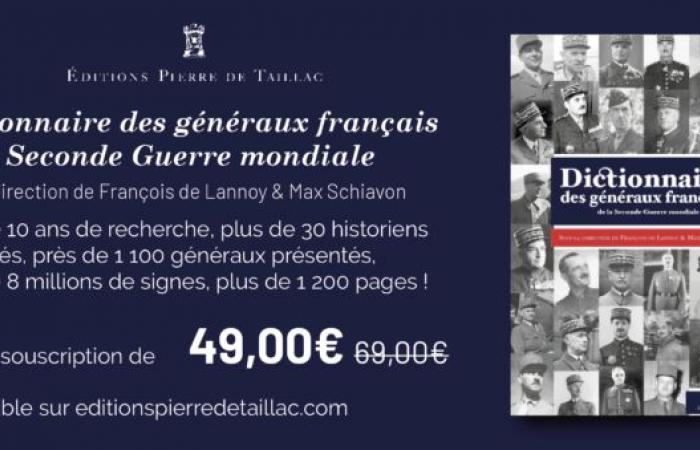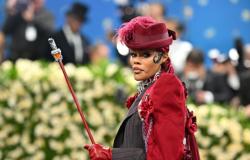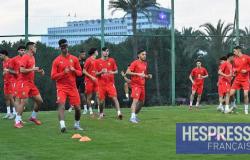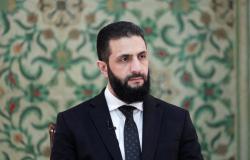The history of the Second world War was widely studied, but a dictionary of the 1,100 French generals of the period lacked. Two experienced historians were needed to carry out this program with more than 10 years of research and more than 30 mobilized historians. A book called to become the reference and a working tool to understand the French military elites of 1939-1945. Max Schiavon was kind enough to answer our questions to present this work.
Interview by Thierry Bouzard for Theatrum Belli
***
Max Schiavon, you are known for your work on the effective leadership that you have taught in France and abroad. You have led the search for the historical defense service and published several biographies of French generals (Gamelin, Weygand, Vauthier, Georges, Olry…). You therefore have expertise in the military archives, the art of command and you are familiar with the 2e GM. Where did the project of this dictionary come from and how did you organize it?
In the early 2010s, I exchanged a lot with François de Lannoy about the French military elites of the Second World War. When we wanted to make comparisons with foreign generals of the same period (age/responsibilities, type of command, curriculum, combat experience, etc.), we realized that studies existed abroad, especially in Germany or a very complete dictionary of generals. And French side … nothing!
The idea naturally came to us to start a long -term project intended to present all the French generals who held a position between September 1939 and May 1945.
As for the organization, we immediately understood that we would take several years to overcome this study and that two people would not be enough. Also we have called on our knowledge in the world of history to participate, with the aim of bringing together competent and enthusiastic personalities.
The most difficult, at the beginning, was to define which generals had to be the subject of a notice. Indeed, there was no exhaustive list of French generals before our work between 1939-1945. We therefore used all the available sources: pre-warlifts, post-war directories, official newspapers, service notes, Ministry of War Papers, archive inventories, testimonies, bibliography, etc. It turned out to be very, very complicated: it took almost a year and some generals are still ” reappeared »3 years ago!
With François de Lannoy, you have already published on the generals of the period (French generals from 1940Ether, 2013; French victory generals, 1942-1945Etai, 2016), what will your work bring new compared to your previous publications?
The two books you cite present in all fifty generals while the dictionary contains 1,087!
In addition, the crossing of the archives, the knowledge of this population made it possible to have an in -depth vision of their journeys and to explain it better.
The dictionary will allow to have a global view of this body of general officers, their careers, qualities and defects of each but also, for example, to know what they did after leaving the active service. Another point: these 1,087 generals are little known, have published thousands of books. They are referenced in the dictionary.
What are the archives that have been used for your team of historians?
first of all, the general’s file kept in the historic defense service in Vincennes as well as boxes containing the archives of large units. Then the digitized base of the Legion of Honor, then the Departmental Archives to consult the civil status in order to verify specific points and determine who were the ancestors of these generals (knowing that all the departments have or had not yet digitized their civil status archives). The National Library made it possible to identify their publications. We also searched the descendants of these generals to find out if they kept private archives. This is what took us a long time but the harvest was rich. Many families have the military file of their ancestor, papers on their careers and several dozen have written small family biographies (sometimes only a few pages) which were communicated to us. We also relied on an imposing bibliography: probably more 4,000 pounds were consulted.
Finally some ” enthusiast »Also helped us: thus a researcher lists the tens of thousands of officers who participated in the 1939-1940 campaign, while another continues his visits to the cemeteries of France to find and inventory the graves of the soldiers who are buried there, etc. This dictionary is therefore a collective work.
I add that all the discovery tracks have been followed. The entire dictionary was reread by 4 different people to correct the maximum number of shells, faults and harmonize.
We have encountered a number of contradictory information, including in the field of civil status. The proper names of places are poorly spelled in one in 20 cases in the quotes of war. Of course, we have rectified but still after verification. In a word it was a Roman job!
It took you over 10 years to complete this work. Not all generals are dealt with in the same way, what were your sorting criteria and what did you choose to retain in the presentations of these officers?
We have chosen to present all the generals active or recalled to the service between September 2, 1939 and May 8, 1945. At first we eliminated the generals placed in territorial positions without operational responsibilities. For example, a 64 -year -old general, recalled in September 1939 to order the Foix subdivision and replaced in 2e Section from November 1939. Then, thanks to the hard work of a contributor, we decided to insert a brief notice in all the subject. This concerns a large hundred generals
Likewise the generals of the Resistance (Chaban-Delmas, Bénouville, Moulin, etc.) are the subject of a short notice because they were promoted at the end of the Second World War and had no military activity before and after it.
On the other hand, the colonels who died in deportation and promoted generals posthumously after May 8, 1945 but to take rank before this date, are the subject of a complete study. They had exemplary behavior not only for the resistance but during their previous military career and they deserved to have left oblivion.
The notices are more or less long depending on the importance of the Treaty General and his activity but they include invariants: the civil status, the course (in military terms, the signage state of services), the quotes and grades in the order of the Legion of Honor, especially assessments at the crucial moments of the career: as a company commander, battalion, regiment, the higher school of war and the center of high studies (Chem).
These assessments brought to the attention of the public are one of the great wealth of the work.
Without developing could you list some typologies of generals and associate some names with it?
Of course. This is obviously not exhaustive:
- 5 Generals killed in combat: Ardant du Picq, Bouffet, Welvert, Jansen, Berniquet, Thierry d’Argenlieu.
- 5 Generals in the Resistance: Bertrand, Gentil, Chouteau, Zeller, Dejussieu, de Grncey.
- 5 generals who died in deportation: de Cugnac, Jouffrault, Dupuis, Mariot, Fresne de Virel.
- 5 Future parliamentarians: Legentilhomme, Noiret, Billotte, Germain, Gilliot.
- 5 generals whose writings have marked history/who have become writers: Ingold, Weygand, Charbonneau, Jacomy, Clement-Grandcourt.
- 5 Unknown generals who deserve light: Vauthier, Chédeville, Foiret (39 campaigns!), Beynet, Robert de Saint-Vincent.
- 5 Generals who were formidable tactics: Guillaume, Leyer, Valluy, Koeltz, hammer.
- 5 Generals murdered by the enemy: Mesny, Lemmonier, Guillaut, Labat, Flament.
- 5 generals who have known a second unexpected/surprising/famous life: Koenig, Pierre Billotte, Hurault, Péchot. Pechkov.
The body of general officers evolves in the long term with personalities followed throughout their careers. The upheavals trained by the defeat of June 1940, the organization of the army of the armistice then that of the resistance and the victory, impact the careers, by blocking some and by pushing others. Do you have some examples?
From 1940 to 1946, the members of the free French forces benefited from an accelerated advancement, this is the case of Leclerc, Koenig, Larminate. de Brosset, de Lengentilhomme, to speak only of the most famous.
But the colonels or generals of the Armistice Army which serve in North Africa (therefore who did not join de Gaulle) but who regained the fight in Tunisia at the end of 1942, in Italy with the French expeditionary force of June, then in France with the 1re Army of Lettre, also see their career accelerating. I can quote Monsabert, Henri Martin, Vernejoul, du Touzet du Vigier, Calliès, Sudre, etc.
The careers resumed an almost normal course from 1946, even if some members of ” chapels Tend down to promote each other until the 1970s. This then ceases because they exceeded the age limit in activity in activity.
- Auteurs : Under the direction of François de Lannoy and Max Schiavon
- Editions : Stone of Taillac
- Blanket : cardboard
- Pages name: 1 200 pages
- Format : 210 x 297 mm








